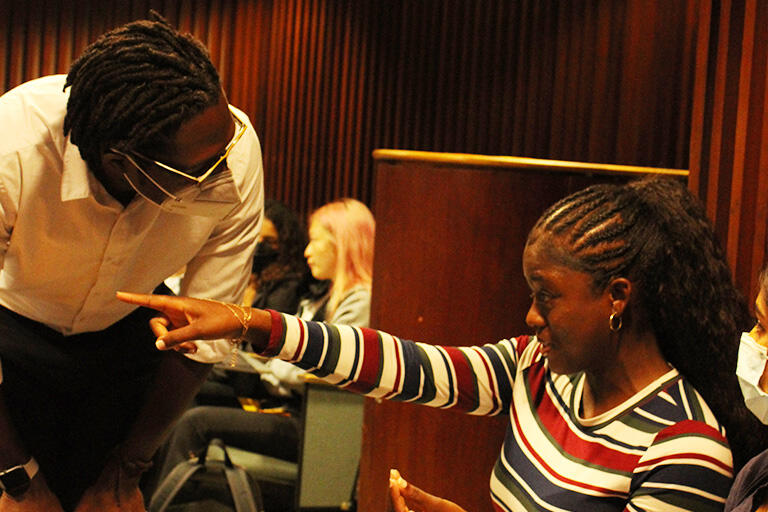Professor Bristol studies the experiences of teachers of color in schools. By understanding their experiences, he explores what conditions are necessary at schools so that they choose to stay in the profession. He notes, "Teachers of color tend to leave their schools at a higher rate when compared to white teachers because—very much like Black people who live in communities where their needs are not met, communities that are harder to live in—Black and Latine teachers are more likely to work in schools where they don’t have all of their needs met in order to work with the students in their classrooms."
Below is a Q&A with Professor Bristol about his research, the importance of having his students grapple with uncomfortable situations, and the impact of his work.




Professor Bristol talks about his research and what inspires him. (Edited for length and clarity, 04:12.)
What inspires you to do what you do?
What inspires me as a researcher is the push to ensure that we’re asking the right questions. At the start of my “academic career” policymakers, like then-Secretary of Education Arne Duncan, began creating policies focused solely on recruiting, for example Black teachers, into the profession. How do we get more Black people into the profession? I wasn’t sure that—while important— was the right question. Of course we want to recruit people, but understanding the experiences of Black teachers, Latine teachers, Asian American and Pacific Islander teachers, Indigenous teachers might give us some insight into how to shape recruitment efforts and help us understand that maybe focusing on recruitment should not be the sole priority and that actually we need to focus on retention.
Over time what I found and what other research has substantiated was that teachers of color have higher rates of turnover than their peers. Many of the recruitment efforts have indeed continued to pay off because we see an increased percentage of Black and Latinx teachers going into the profession and yet we’re seeing them turn over at higher rates than their white peers.
In terms of policy, I know that policy can create problems and policy can fix problems. No Child Left Behind and the mandate that schools close if schools don’t meet certain performance metrics meant that schools in which Black teachers taught were closed disproportionately than their other peers and subgroups. That’s a policy that can create a problem. Some of my work in working with policymakers, like the state superintendent, around understanding some of the experiences of teachers of color, can work to fix problems by creating opportunities for district leaders or county officials to understand how they can better recruit, support, or retain teachers of color.
As a researcher, a goal of research is to shape and inform policy and practice. As I am doing research, I am thinking about what I have found, based on the evidence, to inform what policymakers are doing—for example, like what the state superintendent is doing, in terms of trying to recruit, support, and retain teachers of color as well as what school principals are doing in terms of their own efforts to create working environments to ensure that educators of color want to stay in their buildings.